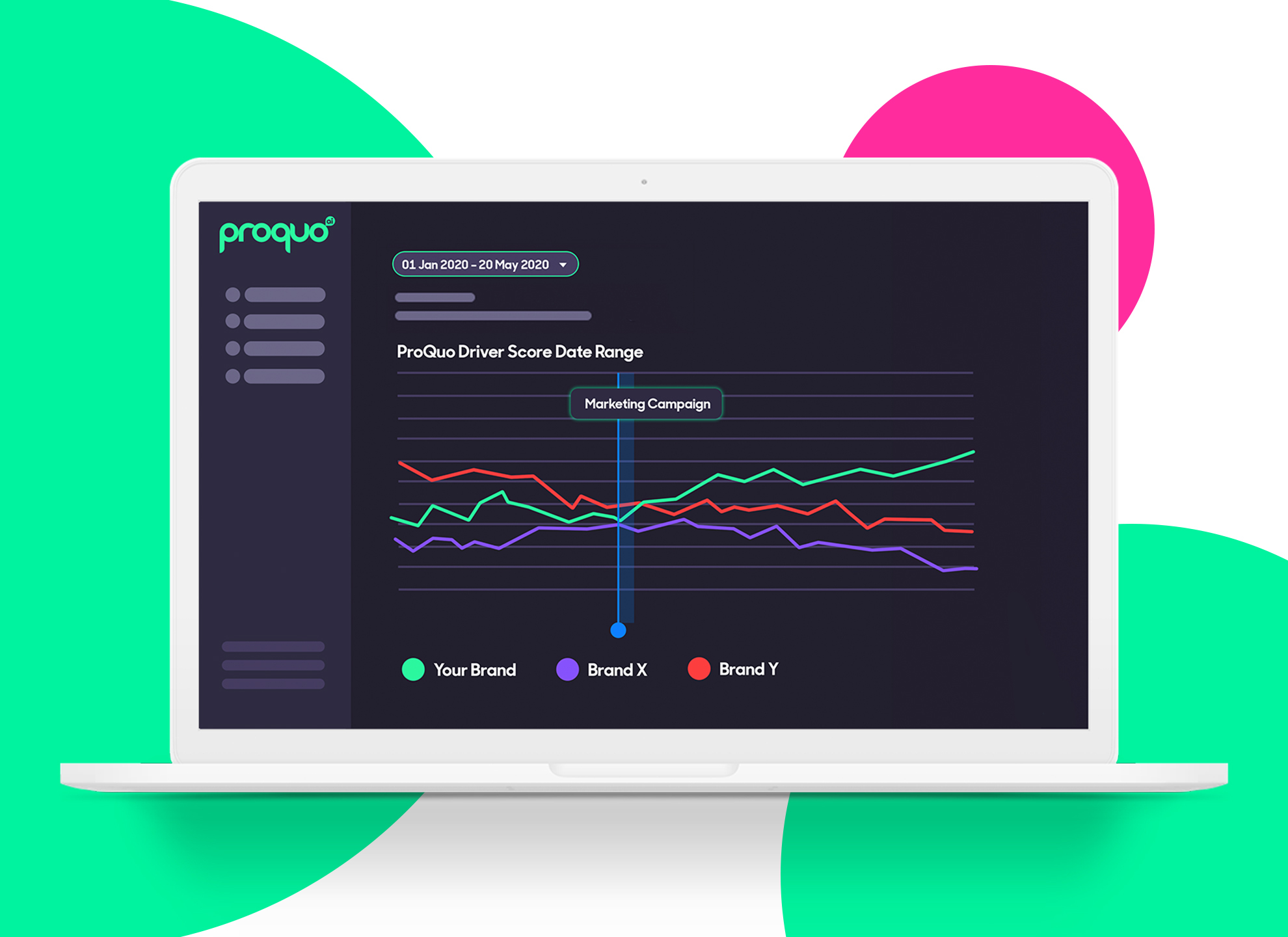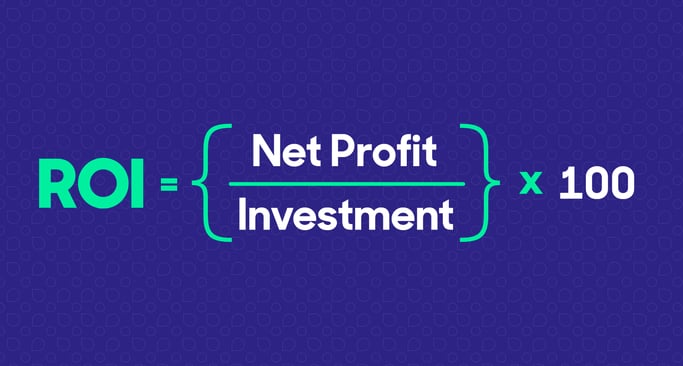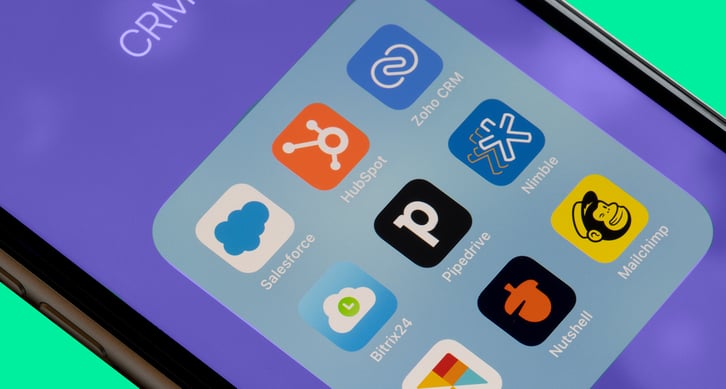Posted on June 28, 2021
Updated on March 9, 2023
5 min read time

Marketing should be seen as an investment, rather than a cost. So, to get senior stakeholders on board with your marketing endeavours, you’ll need to present your team as business enablers, helping the business get closer to its core commercial objectives.
To demonstrate the effectiveness of your marketing, you’ll have to gather proof to show your previous brand activations were a smash hit, as well as evidence that what you have planned will have the impact you say it will.
We’ve outlined five useful solutions below to help you achieve this goal.
Before outlining your marketing plan, you’ll need to understand your business objectives. Is your business trying to steal market share, disrupt the category or drive penetration? Without a clear idea of what your company is aiming towards, you’ll struggle to prove the value of your marketing actions.
If you want to learn more about the process of identifying goals and objectives, we’ve got a handy Brand Strategy guide with your name on it.
Now you’ve got your objective, it’s time to look into ways to measure your marketing impact.
There are plenty of different ways to gauge impact, but we’ll go into five main methods you can use:
Uses: ROI is a good indicator to judge the efficiency of actions, as it shows a direct correlation between activity and sales. You can use ROI to gauge the impact of your marketing, as if your profit is higher than spend, this indicates a successful marketing activation. Brand Managers can use ROI to evaluate previous actions, so they can understand which decisions led to profit, and which need to be improved in future iterations. It’s also good for prioritization, as it uncovers which projects are worth investing time and money into, and which should be discarded for more profitable pursuits.

Drawbacks: If you’re executing multiple marketing activations at one time, ROI won’t be able to determine which specific activity contributed to your end result. So, you won’t receive conclusive results on which area to focus on. Additionally, ROI can lead to companies underinvesting in their marketing teams, as the easiest way to increase ROI is to cut spend. If a campaign is taking longer to generate revenue, as is typical in advertising and media (where results can take six or more weeks to come back), it won’t be an indicative measure to solely look at ROI, as this would indicate a lower success rate. That’s why ROI can so often be thought of as a measure of a company’s efficiency rather than effectiveness, as it doesn’t look at gross profit but instead, at the short-term financial losses.
Uses: Hubspot found 74% of global marketers are currently investing in social media marketing. It’s no wonder why, as with social metrics you can understand your customers on a deeper level by learning what they like and dislike about your business through engagement rates. You can also grow your network of customers, finding new audiences by targeting on different platforms.
Drawbacks: Social Metrics have often been put in the ‘vanity metrics’ camp, as they look good on a graph but may not help to inform future decisions. With social metrics, you see a quick, surface-level view of an execution but aren’t able to dig deeper to infer why this is the case. Correlating sales and marketing through social media is also a huge challenge, as you have to extricate your social data first, placing it into a different platform to be able to compare it with your sales figures.

Uses: A post-campaign analytic report can be carried out by businesses or through external agencies. As it provides a deep dive into a campaign, it’s a useful measure for gauging how successful activations have been. It’s also helpful for tracing whether or not your team has achieved the objectives you set out to accomplish, as every report starts with outlining the goals you set at the beginning of your campaign.
Drawbacks: These reports often come too late – typically received months after a project has ended. Because of this, it’s often difficult to create impactful decisions based on its intelligence. The reports are also usually focused on the performance of a particular campaign or activation, and don’t devote much time to recommendations on how to improve in the future.
Uses: Every customer interaction you have through your CRM, whether it be on your website, email marketing or socials, provides valuable data about your brand performance. With this data, you can learn what types of content your audience engages with (through CTR), which subject lines do best (through Open Rates) and how long people tend to stay on a page. All of this information will benefit you in the future when planning new campaigns to boost engagement and reach.
Drawbacks: These systems may take time to learn. Time will also need to be set aside to train new staff members on how to use these services. It’s also risky to keep a large quantity of personal data in one place. Data sharing is strictly regulated in many countries, like GDPR in the UK. So, businesses may be liable if there’s ever a security breach on these sites. These systems are also limited to digital interactions with your customers, which is great for emails and website visits but not so good to glean how your customers are interacting with your products offline.

Uses: Because it’s reactive, you’ve got the luxury of being able to update and pivot your campaign strategy as you go. It allows you to live in the moment, capitalizing on occasions and contextual events around your brand that could help to boost performance. With real-time data, you can also overlay your commercial metrics to understand how the two intersect. And its best advantage is the information it provides is always up to date, so you can trust you’re future proofing your brand strategy. Real-time data gives marketers confidence, as they know the actions they’re taking are always based on the latest data in the market.
Drawbacks: The real-time analysis solutions available to marketers today, can be costly. That’s why you have to know where to source your real-time tech to ensure you’re getting the best deal for your buck. Another problem is that few solutions offer guidance on what to do next. This leaves brands in the dark, unsure on the best ways to use their data.
The method you choose to go with will vary depending on the objective you’re going after. If your company’s aim was to grow revenue, ROI might be the one for you. But if awareness is your game, social metrics, like reach, may be more advantageous to you.
But if you want a solution that covers all bases and is available 24/7 for any marketing action you’d like to take, real-time is your best option. It allows brands to be reactive, so if their campaign is heating up, they can keep a finger on the pulse to ensure they keep up momentum. It also provides a way of optimizing campaigns as you go, so if a marketing strategy or creative asset isn’t providing the best results, you can shift onto something more effective before it’s too late.
With real-time intelligence you can isolate which specific actions are responsible for your end result, which is something both ROI and post-campaign analytic reports are incapable of doing. The certainty that real-time gives you is also invaluable, supercharging marketers to do their roles with confidence, knowing their data is always up-to-the-minute.
For more information on the value of real-time intelligence platforms, take a look at Safestyle's journey below, or visit our website.
Our intelligent platform will take your brand further, faster.
Don’t believe us?
© 2020-2023 ProQuo AI International
All rights reservedWebsite by Blend